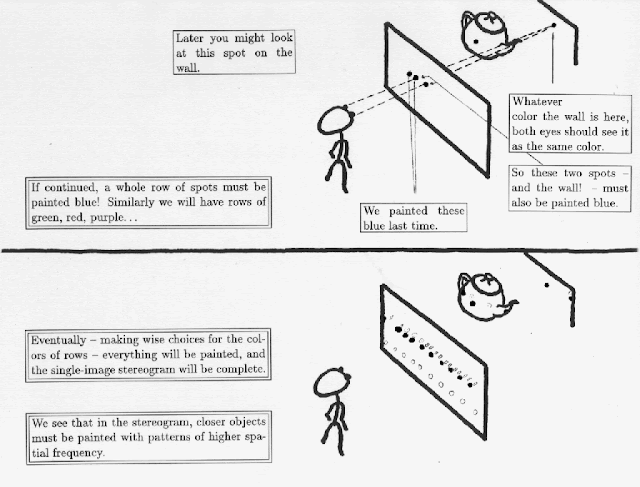Stereograms have interested me ever since they were popularized by the Magic Eye book series. At first I thought stereograms were just some sort of faddish scam, but after a lot of practise, I was able to perceive them and have been fascinated by them every since, particularly as a powerful metaphor for meaning lurking beneath the apparent surface of things.
Nasa's Astronomy Picture of the day is on the theme of the Holographic Principle and offers this explanation and the picture below:
Is this picture worth a thousand words? According to the Holographic Principle, the most information you can get from this image is about 3 x 1065 bits for a normal sized computer monitor. The Holographic Principle, yet unproven, states that there is a maximum amount of information content held by regions adjacent to any surface. Therefore, counter-intuitively, the information content inside a room depends not on the volume of the room but on the area of the bounding walls. The principle derives from the idea that the Planck length, the length scale where quantum mechanics begins to dominate classical gravity, is one side of an area that can hold only about one bit of information. The limit was first postulated by physicist Gerard 't Hooft in 1993. It can arise from generalizations from seemingly distant speculation that the information held by a black hole is determined not by its enclosed volume but by the surface area of its event horizon. The term "holographic" arises from a hologram analogy where three-dimension images are created by projecting light though a flat screen. Beware, other people looking at the featured image may not claim to see 3 x 1065 bits -- they might claim to see a teapot.
The Computer Graphics Lab at Caltech
offers the following explanation of this stereogram...
These explanations are provided on an archived web page by Erik Winfree at Caltech who provides a further information about this project:








No comments:
Post a Comment